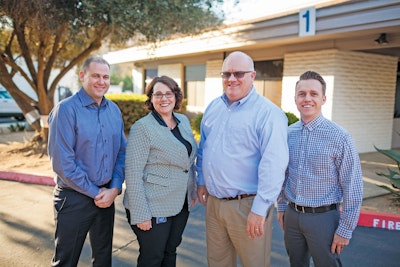
Chris Hand vacuums debris from a lift station while doing routine maintenance for the Rainbow Municipal Water District.
California’s Rainbow Municipal Water District is a vibrant utility serving residential and agricultural customers an hour’s drive north of San Diego. It’s a far cry from 2013 when the district almost ceased to exist, a victim of high staff turnover, board instability, a...








